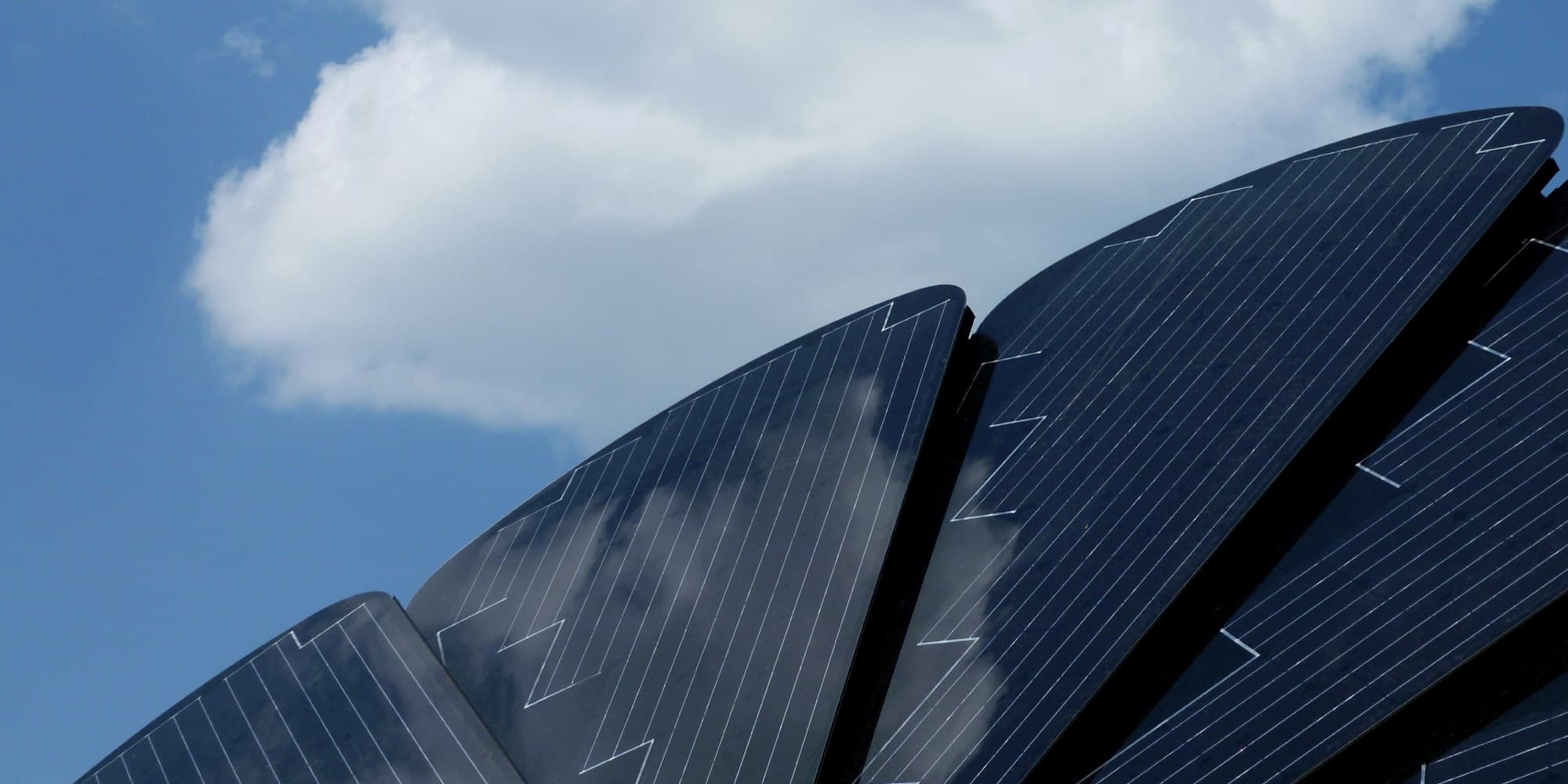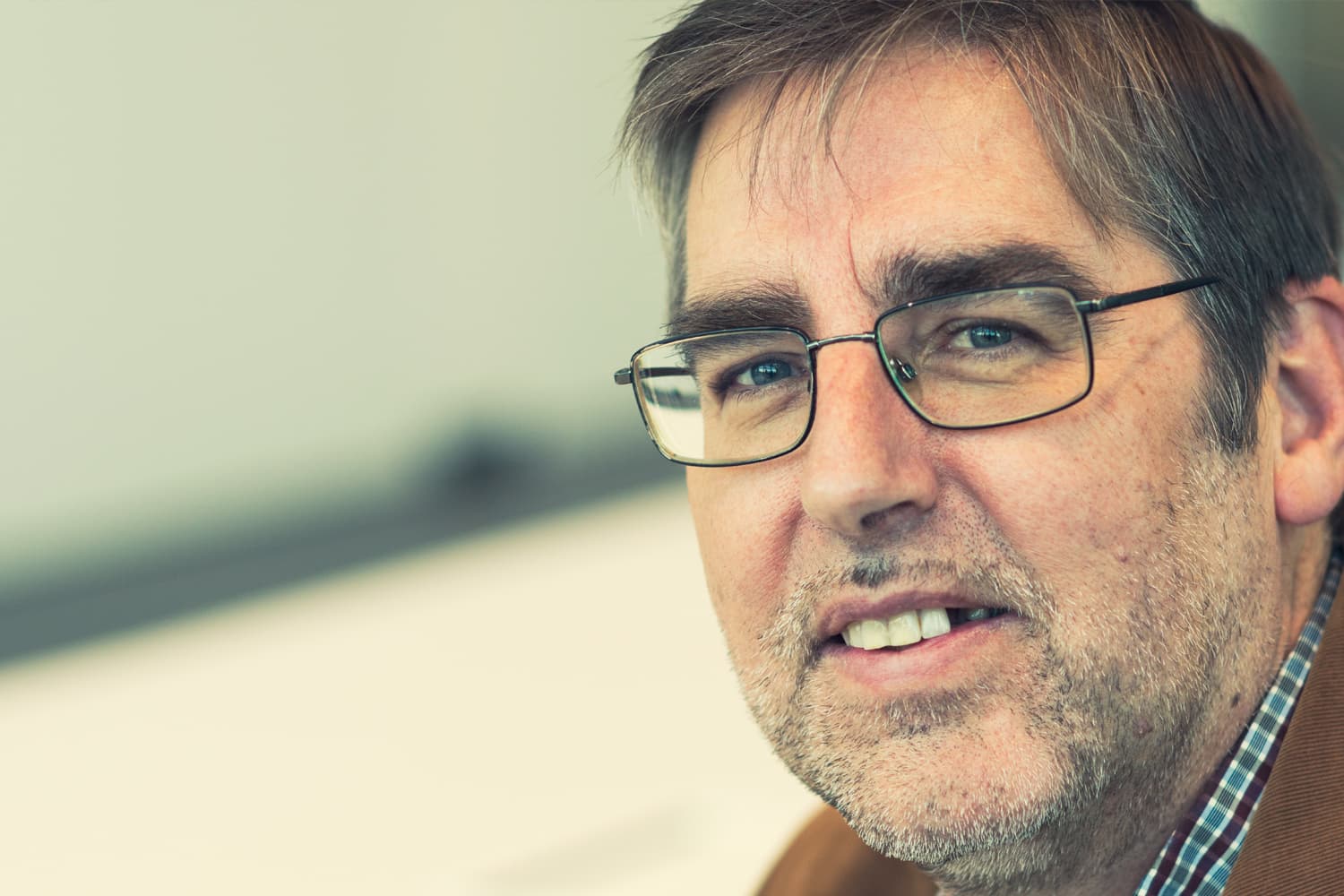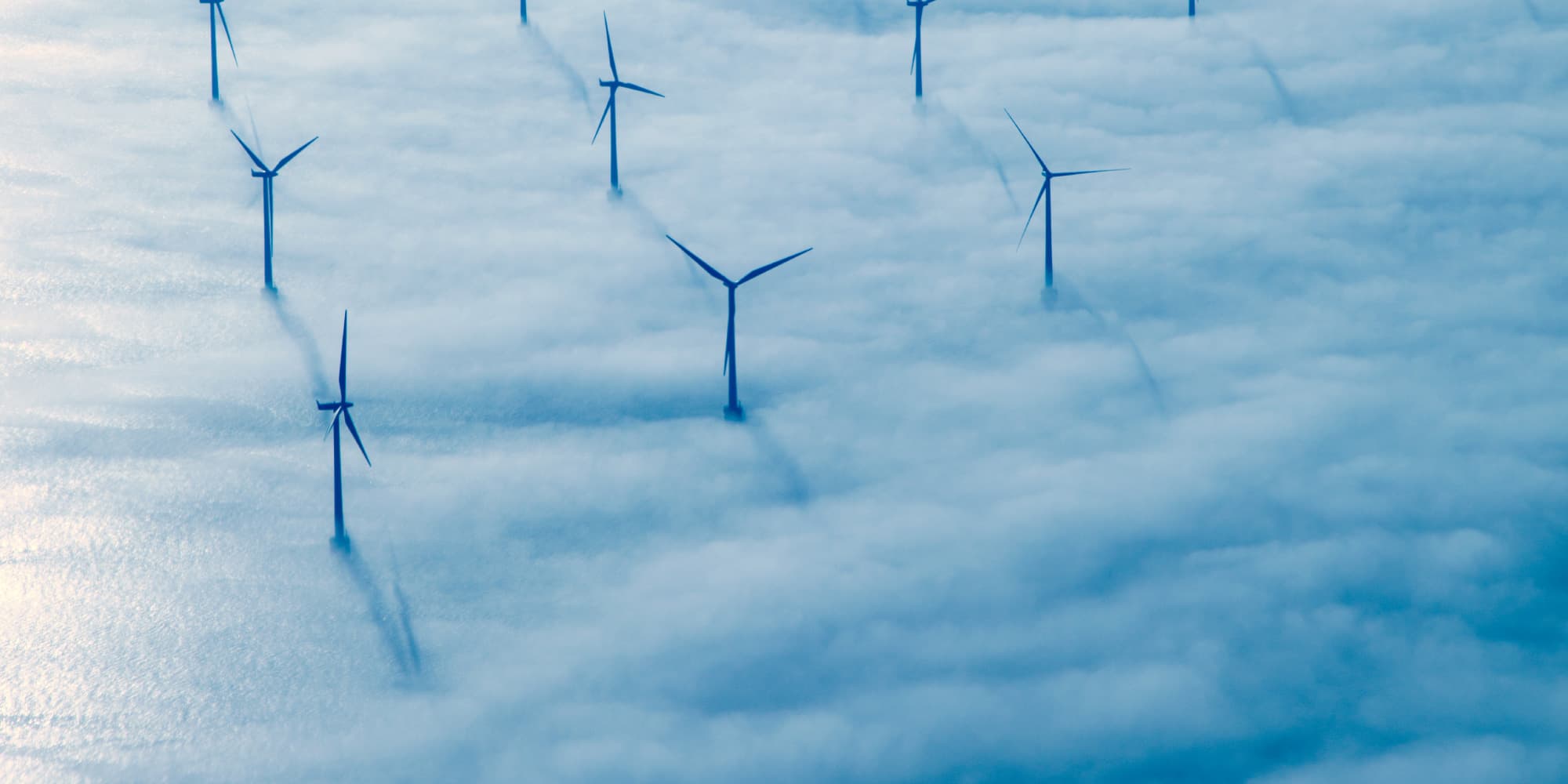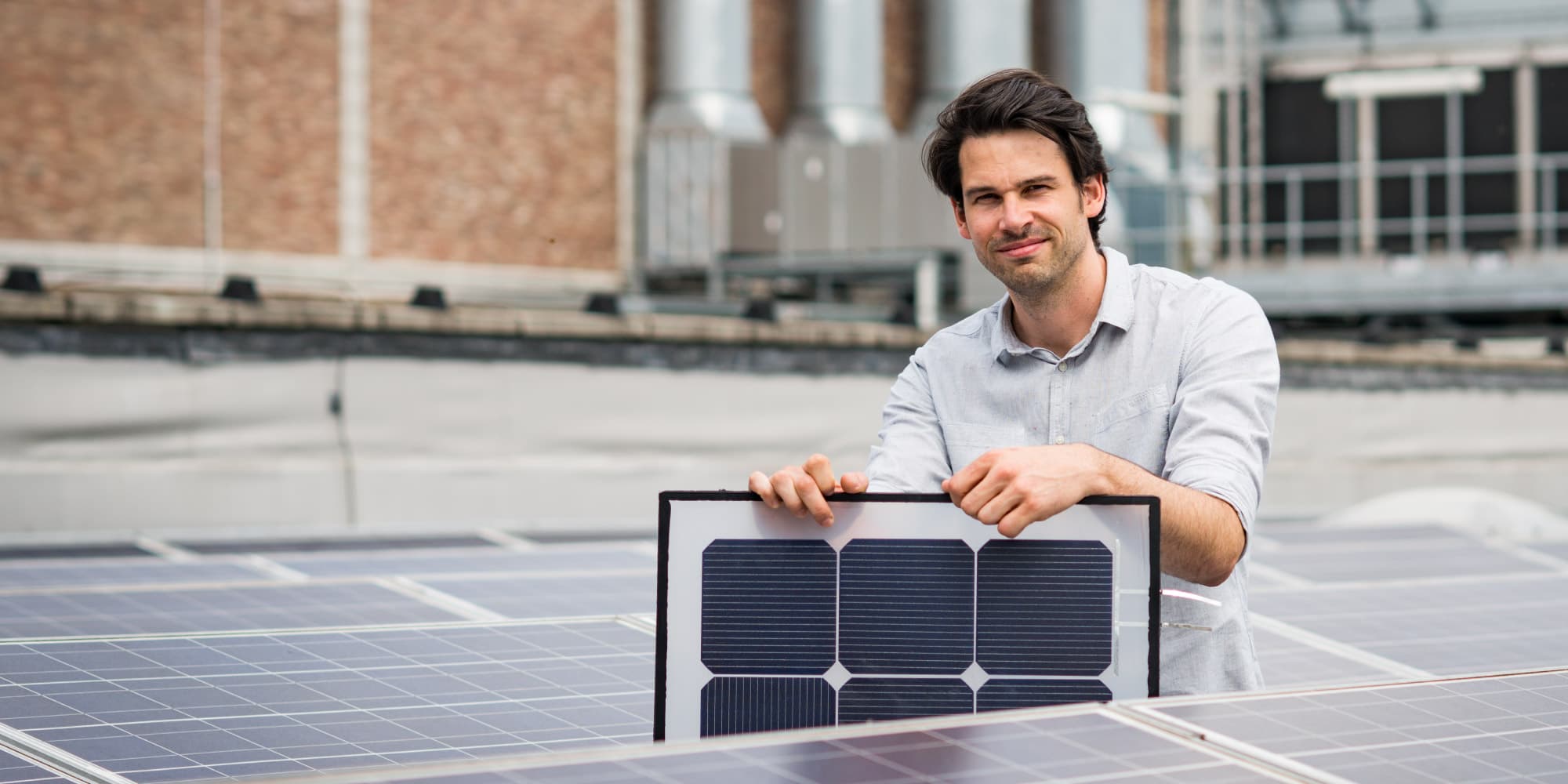Introduction
Jef Poortmans and Matthias Strobbe are creating the new energy network. Poortmans is producing a new generation of batteries and solar cells that are cheaper and more efficient and which operate perfectly in everyday circumstances. Meanwhile, Strobbe is developing smart algorithms that align energy supply and demand, and wireless technology for connecting devices. Both Poortmans and Strobbe agree that to achieve a true sustainable energy system they need more than just technological innovation. It is just as important to ensure the various partners on the energy market are working together, as well as to put the appropriate regulations in place and to develop market-based models that deliver a proper ROI for the various players involved.
Solar cells that not only feel good in the lab, but also on your roof!
To a large extent, the new energy network will be based on renewable, distributed sources of energy, such as solar, wind and water. Jef Poortmans is scientific director photovoltaics (PV) at imec and knows better than anyone what is at stake in the research into solar energy: “Up until five years ago, our researchers were working mainly on ways of reducing the initial investment cost of photovoltaic solar energy, expressed in euro per Wp. And their work (and that of others) was an unprecedented success: thanks to technological innovations, the right incentives and the upscaling of the industry as a whole, the cost of photovoltaic cells fell by a factor of five in the space of ten years. But where previously the focus was on reducing investment costs, attention has now switched to reducing the effective electricity cost of a PV system in terms of eurocents per kWh.”
‘Kilowatt-peak’ refers to the power that the panels produce under standard conditions; ‘kilowatt-hour’ refers to the actual power of the solar panels under real-life circumstances. Maybe a tree casts shadow over your roof at certain hours of the day, the sky is partly cloudy, or you live in a hot and humid climate. Poortmans: “We are now heading towards a situation where solar cells are being developed to suit a specific type of climate: solar cells for deserts, the tropics, temperate climates and so on. Smart solar cells that are also able to work well in changing weather types and that can even know in advance how the weather is likely to change. All of this will enable us to push the price per kWh down even further.”
“But the greatest challenge is definitely increasing the value of the system. This is something we are working towards in close collaboration with our EnergyVille partners,” says Poortmans. “The extent of your solar energy value is defined not only by your own system, but also by how it is integrated and applied within the energy network. For example, if you are producing at a time when there is a surplus of electricity available, then your PV energy does not have much value. When that happens, you need to work with batteries or other solutions to gear the production peak to demand. This is not purely a technical problem and can be a challenge when there are a lot of different parties involved. Hence also the high level of complexity.”
“Last year we achieved very good results with batteries. Our researchers developed a solid electrolyte for Li-ion batteries with a record ion conductibility of 15mS/cm. These batteries are a safer alternative to today’s batteries with their liquid electrolyte.”
Poortmans also emphasizes that esthetics are very important: “Solar cells need to form a seamless part of a building by being integrated into the roof or into big glass walls.”
Virtual batteries
Matthias Strobbe knows just about everything about the ‘seamless integration of PV’ – if not in architectural terms then certainly in relation to the electricity grid: “Our research team, under Professor Chris Develder, is busy developing smart algorithms and communication technology for the new energy network. Our aim is to be able to integrate renewable energy sources seamlessly into the network. The problem is that the production of energy based on sun, wind and water is variable and does not always correspond to demand. You can, as Jef says, work with batteries for storing energy, but you can also use ‘virtual’ batteries. For example you can use a boiler as a thermal buffer, or you can recharge an electric car when there’s a surplus of energy available and you can adjust the temperature of a cold store one degree higher if there is a shortage of energy, and so on.” In other words: demand side management is equally important.
How flexible is your energy usage?
An important condition for the scenario above to work is that you have a clear picture of energy usage and especially of the level of flexibility in place to delay or bring forward this energy consumption where required. Strobbe: “In past years we have gathered a mass of data about energy usage in homes and business, as part of the LINEAR project. Based on this we have set up statistical models that give us a clear picture of the consumption of equipment and appliances and the time at which that usage takes place. These models serve as input for our smart algorithms, which are designed to harmonize energy production and energy usage.”
“Last year we also worked on technology for wireless communication between sensors. Sensors are essential in the energy network of the future for enabling appliances and machines to communicate with one another, as well as with the network. This includes things such as ventilation, heating and sun protection. These are all systems that need to be able to ‘talk’ to each other to create an energy-efficient building. Our research group is working on standardization and making wireless technology more economical.”
Solar cells with two sides
A great deal also happened in 2016 in the area of imec’s solar cell research. Poortmans: “A very important trend in PV is the development of two-faced or bifacial solar cells. These are cells that are capable of collecting light on both their upper side and lower side and converting it to electricity. This also enables the light reflected from the ground to be put to good use and hence improve the energy output. These solar panels can also be placed upright, for example in solar power stations in the desert. This gives you a much flatter production profile and as an additional bonus, the panels don’t collect so much sand on their surface, which is a common problem with the solar panels currently installed in deserts. Our researchers have produced a bifacial solar cell with efficiency in excess of 22%. They have also developed a new plating technique for metalizing the front and back of the solar cell. To put in the correct perspective, with typical reflection, this corresponds to an ‘effective efficiency’ of 26%.”
“Another new kid on the block is the perovskite cell. Last year, we achieved 19% efficiency with these. In terms of perovskite modules, a number of world-best results have also been achieved – and certainly not forgetting that we have now produced semi-transparent PV modules. Transparency is important for integrating the modules in glazed façades, or if you want to incorporate the perovskite cell above a silicon solar cell. In this latter case, efficiency levels of up to 30% and more can be achieved (at exposure level 1 sun).”
A sunny future?
The merger of imec and iMinds is definitely a positive step forward for the new energy network and will certainly boost the EnergyVille offering. Poortmans: “Our areas of expertise complement each other perfectly. Technically speaking, I believe that we can achieve a smart energy network by 2030, although good regulations will be essential to cover all interests and make sure we are all heading in the right direction. For instance, this is to avoid situations where electricity users wanting to be self-sufficient with solar cells and batteries find themselves having to pay a ‘disconnection’ fee to the energy provider.”
Strobbe: “There are indeed a great many areas of expertise required to achieve a smart energy network. One of these areas is security, which is a field in which imec - KU Leuven - COSIC excel. If you are going to connect all appliances with each other and also with the network, they could also be hacked. And as data will be collected about energy usage, there are all sorts of things that hackers could deduce about the day-to-day ins and outs of families and businesses. So the smart energy network of the future must be secure, respect people’s privacy and also be reliable. It’s OK for a multimedia application to drop out, but you wouldn’t tolerate it if that happened to your electricity network.”

Jozef Poortmans received his degree in electronic engineering from the Catholic University of Leuven, Belgium, in 1985. He joined imec and worked on laser recrystallization of polysilicon and a-Si for SOI applications and thin-film transistors. In 1988 he began working on his PhD on strained SiGe layers. He was awarded his PhD in June 1993. Afterwards he joined the photovoltaics group, where he became responsible for the advanced solar cell group. Within this framework he started the thin-film crystalline Si solar cells activity at imec. He also coordinated several European Projects in this area as part of the 4th and 5th European Framework Programs. In 2003 he became cluster coordinator of European projects in the field of thin-film solar cells. In 1998 he initiated the organic solar cells activity at imec, which was complemented by an activity dealing with III-V solar cells, which began in 2000. At the present time, Jozef is scientific director photovoltaics at imec.

Matthias Strobbe received his M.Sc. degree and Ph.D. in Computer Science Engineering from Ghent University in July 2004 and June 2011 respectively. He was affiliated with the IDLab research group at Ghent University and imec (formerly iMinds) from 2004. He has worked as senior researcher and project coordinator in the field of smart energy grids since 2011. He jointly coordinates research projects in the teams of professors Chris Develder and Ingrid Moerman at imec – UGent – IDLab. In 2016 Matthias also became an IoT business developer for smart energy, smart buildings and digital manufacturing.
Published on:
1 January 2017














